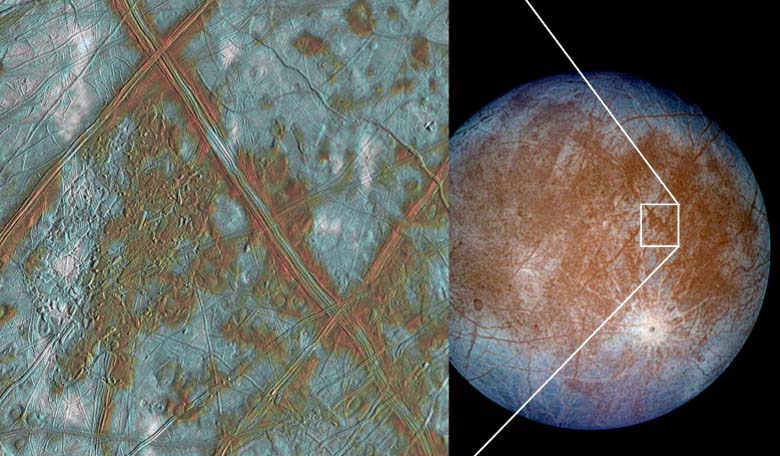The fractured mosaic surface of Europa has been of great interest to researchers since it was first observed. The smallest of the four Galilean moons, Europa is under a constant gravitational assault, causing the icy surface to heave and fall with the pull of Jupiter's gravity, as it orbits the gaseous giant.
The surface patterns have led researchers to assume that some sort of tectonic activity must be at work to produce enough heat to cause the fractures and this far away from the Sun, tidal dissipation was the favoured process to explain how places on Europa that look like melt-through or mushy ice.
Now, experiments by geoscientists from Brown and Columbia universities suggest that tidal dissipation could create far more heat in Europa's ice than scientists had previously assumed. The work could help researchers to better estimate the thickness of the moon's outer shell. This in turn can help to understand the bulk chemistry of the moon relative to the thickness of the shell, which ultimately could give an indication as to the chemistry in the moon’s oceans. And if you're looking for life, then the chemical make-up is a big deal.
In simplistic terms, the effect of tidal dissipation can be likened to what happens when someone repeatedly bends a metal coat hanger. "If you bend it back and forth, you can feel it making heat at the junction," said Christine McCarthy, a faculty member at Columbia University who led this new research as a graduate student at Brown. "The way it does that is that internal defects within that metal are rubbing past each other, and it's a similar process to how energy would be dissipated in ice."
However, how this process works in ice isn’t well understood, and simple mechanical models to describe the ice were not getting the kind of heat fluxes needed to capture those surface dynamics seen on Europa. So McCarthy, along with Reid Cooper, professor of Earth, environmental and planetary sciences at Brown, loaded ice samples into a compression apparatus to try to understand this process better.
Their experiments yielded surprising results and suggests that most of the heat comes from defects that form in the ice's crystalline lattice as a result of deformation, rather than from friction at the boundaries between the ice grains. "Christine discovered that, relative to the models the community has been using, ice appears to be an order of magnitude more dissipative than people had thought," said Cooper. As more dissipation equals more heat, it can provide modellers with a new physics to apply, as they try to unravel the mysteries of Europa's hidden ocean.











